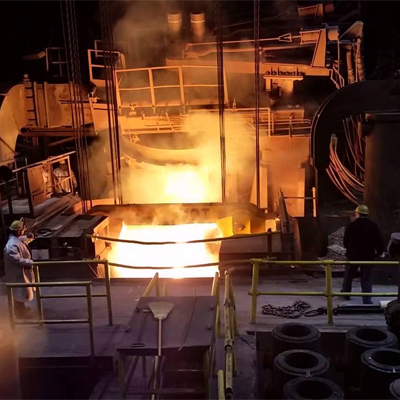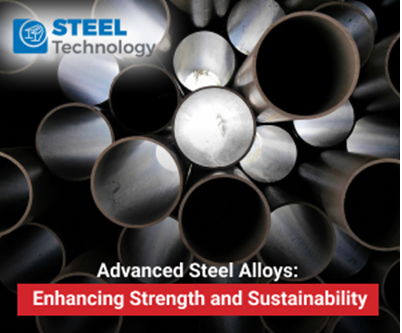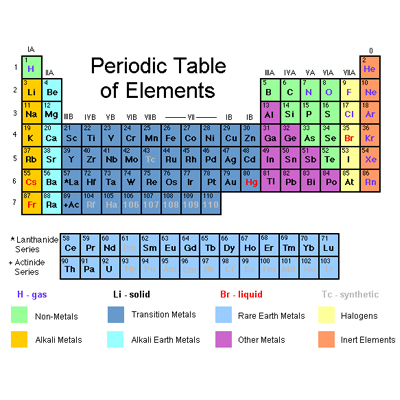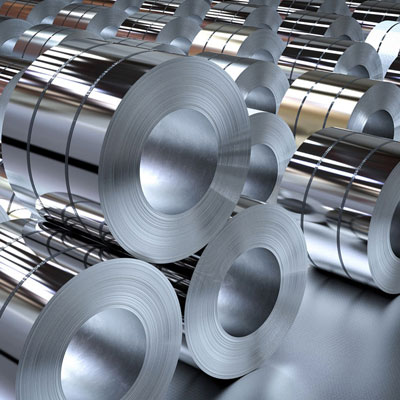Top 5 Sustainability Trends in Crude Steel Production for the Year 2023
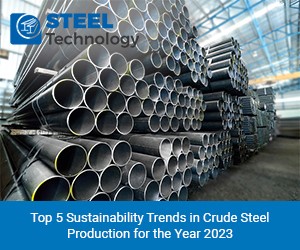
Introduction
In the dynamic landscape of industrial production, the year 2023 stands as a pivotal period for the crude steel manufacturing sector. As industries worldwide increasingly embrace sustainability as a core principle, the crude steel production industry is taking significant strides to align with these global initiatives. This article sheds light on the notable sustainability endeavors undertaken by the crude steel production industry in 2023, highlighting the industry's commitment to balancing economic growth with environmental responsibility.
Crude Steel Production for the Year 2023
1. Transitioning to Green Technologies: Crude Steel Production in 2023
The year 2023 is witnessing a significant transformation in the crude steel production sector. As the world places greater emphasis on sustainability, the industry is rapidly adopting environmentally friendly technologies in its operations. This crucial shift not only tackles ecological issues but also ensures the sector's enduring relevance in a world that is growing more aware of its impact on the environment.
Against the backdrop of growing environmental awareness, the crude steel production industry is embracing a fundamental transformation by shifting towards what is commonly referred to as "green technologies." These technologies encompass a range of innovative approaches aimed at reducing the sector's reliance on traditional, carbon-intensive production methods. This transition is driven by the industry's recognition of the urgent need to curb greenhouse gas emissions, conserve natural resources, and minimize the overall ecological impact of steel manufacturing.
One prominent facet of this technological shift is the adoption of hydrogen-based direct reduction processes. Unlike conventional methods that rely heavily on coal and other fossil fuels, hydrogen-based reduction employs hydrogen gas to reduce iron ore into iron, a crucial step in steel production. This approach not only results in lower carbon emissions but also produces water vapor as a byproduct rather than carbon dioxide, contributing to a cleaner manufacturing process.
Additionally, the industry is increasingly turning to electric arc furnaces powered by renewable energy sources such as wind or solar power. These furnaces utilize electricity to melt recycled steel scrap, a departure from the traditional blast furnace method that relies on iron ore. This transition reduces the carbon footprint significantly, as it eliminates the need for coking coal and reduces emissions associated with the iron ore reduction process.
Furthermore, technologies focused on improving energy efficiency within existing processes are gaining traction. Advancements in furnace design, waste heat recovery, and process optimization are helping the industry reduce energy consumption and subsequent emissions. By embracing these energy-saving innovations, the sector is not only contributing to its sustainability goals but also enhancing its overall economic competitiveness.
In 2023, the shift towards green technologies in the crude steel production industry is more than a mere adaptation to changing times; it is a resounding commitment to reshaping the industry's future. This commitment extends beyond immediate operational changes; it's a pledge to innovate and collaborate in the pursuit of a more sustainable, environmentally responsible, and economically resilient steel production ecosystem. As this transition gains momentum, it reinforces the industry's role as a pivotal player in the broader global effort to combat climate change and build a more sustainable world.
2. Circular Economy Integration
As the calendar turns to 2023, the crude steel production sector is embracing a paradigm shift that goes beyond traditional manufacturing approaches. At the forefront of this transformation is the integration of circular economy principles, a concept that holds the potential to revolutionize the way steel is produced, used, and recycled. This shift towards circularity not only aligns with global sustainability goals but also showcases the industry's commitment to responsible resource management.
In the context of crude steel production, circular economy integration signifies a departure from the linear "take-make-dispose" model. Instead, the industry is adopting a closed-loop system where materials are continuously cycled through various stages, minimizing waste and maximizing resource efficiency. This approach is a win-win proposition: it reduces the strain on finite resources and curbs the environmental impacts associated with traditional production and disposal methods.
Incorporating circular economy principles into the crude steel production sector prominently revolves around prioritizing recycling. As of 2023, producers are notably dedicating more resources to cutting-edge recycling technologies and building infrastructure to reclaim steel from products that have completed their lifecycle. This dual approach not only preserves precious raw materials but also diminishes the energy-demanding procedures necessary for original extraction and refining processes.
Moreover, the shift towards circularity extends to the design phase, as manufacturers focus on creating products that are more easily recyclable at the end of their lifecycle. This "design for recycling" approach considers factors such as material compatibility and ease of disassembly, ensuring that products can be efficiently broken down into their constituent parts for reuse.
In this circular economy landscape, the role of consumers also evolves. The industry is working to raise awareness among consumers about the value of recycling and the impact of their choices. By encouraging responsible disposal of steel products and incentivizing the return of used items for recycling, the sector aims to close the loop by reintroducing recycled steel into the production process.
The infusion of circular economy principles into the crude steel production sector transcends strategic choice; it embodies a resolute commitment to reshape the industry's rapport with resources and the environment. Manufacturers, by embracing circular practices, not only curtail their ecological footprint but also position themselves as pioneers in sustainable business endeavors. With the rising prominence of the circular economy, the steel production domain exemplifies the fusion of industrial progress with ecological accountability, presenting a persuasive blueprint for other industries to replicate.
3. Pioneering Research and Development
In the dynamic landscape of 2023, the crude steel production industry is harnessing the power of research and development (R&D) to drive innovation, enhance efficiency, and propel sustainability to new heights. Pioneering R&D initiatives have taken center stage, reflecting the sector's determination to shape a more sustainable and technologically advanced future.
Central to this undertaking, lies a commitment to continuously push the boundaries of what's possible. Investment in R&D is not just an expense; it's an investment in the industry's resilience, competitiveness, and capacity to adapt to evolving challenges. As the year unfolds, the industry's focus on R&D has yielded a range of groundbreaking advancements with the potential to redefine how crude steel is produced and its environmental impact minimized.
One notable area of exploration is the optimization of furnace operations. Innovations in furnace design, heat distribution, and combustion efficiency are being pursued with the aim of reducing energy consumption and emissions. These advancements not only enhance the sustainability of steel production but also contribute to cost savings, making the industry more economically viable in the long run.
In parallel, the industry is pioneering new catalysts and additives that facilitate more efficient chemical reactions within the production process. These catalysts can lead to shorter reaction times, lower energy requirements, and reduced waste generation, all of which are crucial factors in driving a sustainable transformation.
Furthermore, the concept of waste heat recovery is gaining momentum through R&D efforts. By capturing and repurposing heat generated during steel production, the industry can achieve substantial energy savings. Waste heat recovery technologies not only enhance efficiency but also align with global sustainability objectives by minimizing the sector's overall energy consumption.
The integration of digital technologies is another hallmark of the industry's R&D journey. The adoption of data analytics, machine learning, and predictive modeling allows for more accurate process optimization and real-time monitoring. These technologies enhance the industry's ability to respond swiftly to changes and anomalies, ultimately leading to better resource utilization and reduced environmental impact.
In 2023, the crude steel production sector's pioneering research and development initiatives signify more than just a commitment to innovation; they underscore a determination to lead in sustainability. As industry stakeholders collaborate with research institutions, technology providers, and regulatory bodies, they pave the way for a future where steel production is not just a necessity but a beacon of environmental stewardship and technological ingenuity. Through these collective efforts, the industry positions itself as a trailblazer, demonstrating that progress and sustainability can indeed go hand in hand.
4. Ambitious Emission Reduction Targets
In the year 2023, the crude steel production industry stands at a crucial juncture in its commitment to sustainability, as it boldly embraces ambitious emission reduction targets. As global concerns about climate change intensify, the industry's pledge to reduce its carbon footprint is a testament to its recognition of the urgent need for transformative action.
Amidst growing calls for industries to address their role in climate change, the crude steel production sector has stepped up by setting its sights on achieving net-zero carbon emissions. This visionary goal, often slated for realization by 2050, demonstrates a profound commitment to aligning business operations with global climate objectives.
To meet these ambitious emission reduction targets, the industry is implementing an array of strategic measures. Foremost among these is the adoption of energy-efficient technologies that optimize production processes while minimizing energy consumption. Transitioning to technologies like electric arc furnaces, which rely on renewable energy sources, represents a significant step towards decoupling production from carbon-intensive energy inputs.
Carbon capture and storage (CCS) technologies also play a pivotal role in the industry's emission reduction strategy. These innovative solutions involve capturing carbon dioxide emissions at their source and securely storing them underground. By preventing a substantial portion of emissions from entering the atmosphere, CCS contributes significantly to the industry's journey towards net-zero emissions.
Additionally, a heightened uptake of renewable energy sources is emerging as a cornerstone of emission reduction efforts. By replacing fossil fuels with renewable alternatives like solar, wind, and hydroelectric power, the industry reduces its reliance on carbon-intensive energy and makes substantial strides in lowering its overall carbon footprint.
In the broader context, these emission reduction targets are not just about mitigating environmental impact. They also serve as a powerful catalyst for innovation and industry transformation. As steel manufacturers collaborate with technology providers and researchers, they're driving the development of cutting-edge solutions that have the potential to revolutionize industrial processes beyond their own sector.
As the crude steel production industry commits to ambitious emission reduction targets, it sends a clear message: sustainability is not an option, but a responsibility. By embracing these targets, the sector positions itself as a driving force in the global fight against climate change, demonstrating its resolve to shape a future where steel production is synonymous with environmental stewardship. In doing so, the industry paves the way for a more sustainable and resilient industrial landscape for generations to come.
5. Collaborative Initiatives and Industry Standards
In the dynamic landscape of 2023, the crude steel production industry is undergoing a profound transformation driven by collaborative initiatives and the establishment of industry-wide sustainability standards. Recognizing the interconnected nature of sustainability challenges, the industry is embracing a collective approach that transcends individual boundaries and fosters a culture of cooperation.
Central to this, lies a web of partnerships and collaborations that span across manufacturers, technology providers, governmental bodies, and non-governmental organizations. These alliances serve as conduits for knowledge exchange, best practice sharing, and the pooling of resources to tackle shared sustainability objectives.
In 2023, these collaborative initiatives manifest in various forms. Research consortia, for instance, unite steel manufacturers with academic institutions to collectively explore innovative solutions for reducing environmental impact. By combining expertise and resources, these partnerships accelerate the development of sustainable technologies, from energy-efficient production processes to advanced recycling methods.
Moreover, collaborations are instrumental in driving policy advocacy. Industry stakeholders are teaming up to engage with governments and regulatory bodies to shape policies that support sustainable practices. These concerted efforts not only ensure a level playing field but also provide a platform for the industry to contribute its expertise to the formulation of effective sustainability regulations.
In parallel, the establishment of industry-wide sustainability standards serves as a guiding compass for responsible practices. These standards encompass a range of factors, from emissions reduction and resource efficiency to ethical labor practices and supply chain transparency. By adhering to such standards, the industry fosters consistency and accountability across its operations.
The adoption of common benchmarks and certifications further amplifies the sector's commitment to sustainability. By undergoing third-party assessments, steel manufacturers can demonstrate their adherence to rigorous sustainability criteria, building trust among consumers, investors, and stakeholders.
By embracing collaborative initiatives and industry standards, the crude steel production sector is not only addressing immediate sustainability challenges but also paving the way for a more cohesive and responsible industrial ecosystem. As these partnerships flourish and standards evolve, they provide a framework that empowers the industry to collectively navigate the complexities of sustainability, elevating its role as a positive force for change in a rapidly changing world.
Conclusion
In 2023, the crude steel production industry stands as a beacon of sustainability through its visionary initiatives. As it shifts towards green technologies, integrates circular economy principles, pioneers innovative research, sets ambitious emission reduction targets, and collaborates to establish industry standards, it reaffirms its commitment to a more environmentally responsible and economically viable future. These collective efforts not only position the industry as a leader in sustainable practices but also highlight its vital role in forging a path toward a greener and more sustainable world.





